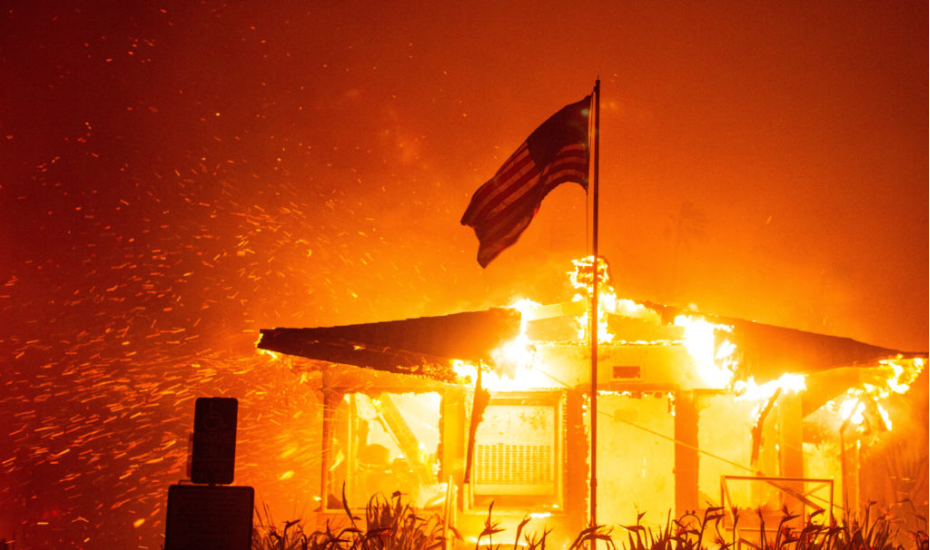Los Angeles has once again been struck by a devastating wildfire, a reminder of the region’s vulnerability to such disasters. The fire, which erupted in the [specific area, e.g., Angeles National Forest], quickly spread due to dry conditions, high temperatures, and Santa Ana winds, which have long been a catalyst for fast-moving blazes in Southern California.
Table of Contents
Los Angeles has once again been struck by a devastating wildfire, a reminder of the region’s vulnerability to such disasters. The fire, which erupted in the [specific area, e.g., Angeles National Forest], quickly spread due to dry conditions, high temperatures, and Santa Ana winds, which have long been a catalyst for fast-moving blazes in Southern California.
Outbreak and Spread
The wildfire reportedly started on [date] around [specific time], with initial reports attributing the cause to [natural causes, human activity, or ongoing investigation]. Within hours, the flames consumed thousands of acres, forcing evacuations in nearby neighborhoods, threatening homes, and creating hazardous air quality across the city. The Los Angeles Fire Department (LAFD) declared the incident a Level 3 emergency, mobilizing hundreds of firefighters and aerial units to combat the flames.
Evacuations and Impact
Authorities issued mandatory evacuation orders for areas in the fire’s immediate path, displacing thousands of residents. Temporary shelters were established at local schools and community centers, offering refuge to those affected. The fire also disrupted transportation, with road closures on major highways such as [list impacted roads] and significant delays at Los Angeles International Airport (LAX) due to poor visibility.
Environmental and Health Effects
The environmental toll has been severe, with large swathes of wildlife habitats destroyed and endangered species at risk. Smoke and ash blanketed much of the region, prompting air quality advisories and warnings for vulnerable populations, including children, the elderly, and those with pre-existing respiratory conditions.
Response and Containment Efforts
Firefighters worked around the clock to contain the blaze, employing advanced technology, including drones and satellite imagery, to track the fire’s progression. Despite their efforts, containment remained challenging due to unpredictable wind patterns and rugged terrain. Local and state officials coordinated to deploy additional resources, including firefighting reinforcements from neighboring states.
Looking Ahead
As the fire nears containment, attention will turn to recovery efforts, including assessing the damage, rebuilding destroyed properties, and providing support to affected communities. The incident has reignited discussions about wildfire prevention and the need for investment in infrastructure, sustainable land management, and community preparedness programs.
The Los Angeles fire serves as a stark reminder of the increasing frequency and intensity of wildfires in California, driven by climate change and urban expansion. It underscores the urgency for collective action to mitigate these disasters and protect both human lives and the environment.
Direct Economic Loss

Property Damage: The destruction of homes, commercial buildings, and infrastructure often accounts for the largest share of the loss. Each wildfire in California can result in property damages ranging from tens of millions to over a billion dollars. For example, the 2018 Camp Fire resulted in $16.5 billion in losses.
Firefighting Costs: These include the expenses for personnel, equipment, aircraft, and other resources. Fighting a large wildfire in Los Angeles can cost tens of millions of dollars per day.
Indirect Economic Loss
Business Interruptions: Businesses may lose income due to evacuations, damage, or disrupted supply chains. Tourism and hospitality industries in the affected area often take a significant hit.
Health Impacts: Medical expenses related to smoke inhalation and other health issues can be substantial. Prolonged air quality problems can also affect productivity.
Agricultural Damage: If the fire impacts rural areas, there may be significant losses in crops, livestock, and related industries.
Environmental Loss
- Destruction of ecosystems, wildlife habitats, and natural resources.
- Long-term environmental restoration costs, including reforestation and soil erosion control.
Total Estimate
While the total cost of any specific fire in Los Angeles needs detailed assessment, large-scale wildfires in California often result in losses exceeding hundreds of millions to several billion dollars.
For more precise figures related to the recent Los Angeles fire, ongoing damage assessments and official reports will provide clarity.










